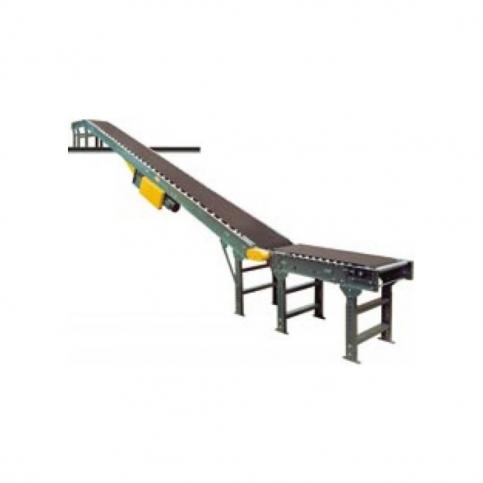Incline conveyors are essential for systems that require transportation of products or materials to a higher elevation. They are often used in tandem with decline conveyors, which does the same thing but in the opposite direction. Different kinds of incline conveyors are designed using different methods of inclination so that users have the versatility to choose the method that works best with their floor layout or existing systems.
Here are three types of incline conveyor systems that are distributed at Norpak Handling to provide you the confidence of control and precision.
Hytrol SBI and RBI Conveyors
The Hytrol SBI is a floor-to-floor belt conveyor, with inclines adjustable up to 30 degrees. It comes with an adjustable double nose-over at the discharge end to help facilitate smooth transfers from the incline to a horizontal plane. It is also reversible. The RBI is also a belt conveyor and is a similar product, with both models also being able to function as booster conveyors in gravity flow systems.
The difference between these two models is that the SBI utilizes slider beds while the RBI utilizes roller beds. These conveyors offer a continuous flow of products which provide the greatest throughput capacity. The only downside is that they take up a great amount of floor space.
Vertical Conveyors (Continuous or Reciprocating)
We utilize several different vertical conveyors at Norpak Handling from industry leading manufacturers Omni, TKF, and PFlow. A vertical conveyor automatically lifts products from one level to another using platforms. They can either be continuous or reciprocating (discontinuous). The main difference between a continuous and reciprocating vertical conveyor is in their speed and capacity. Continuous vertical conveyors are higher speed and products can be fed into their system continuously as they have multiple platforms that cycle around. Reciprocating conveyors have to deposit the products at another level before descending again to receive a new feed of products.
The plus side to these kinds of decline or incline conveyors is that they take up the least amount of floor space, though this does come with a much reduced throughput capacity. Unlike the Hytrol SBI and RBI belt conveyors, these types of machines are much more complex and will require more attention and maintenance.
Spiral Conveyors
Much like vertical conveyors, spiral conveyors transport products between levels but do so in a spiral path. They tend to be faster and can accommodate multiple products all at once – the entire length of the spiral can be filled with products, though with gaps in between. They will be able to offer the same high throughput capacities as the Hytrol RBI and SBI belt conveyors, but at a shorter floor space requirement (though the diameter of the unit will result in a wider floor space requirement).
They are more complex than simple belt incline or decline conveyors but are not as complex as vertical conveyors in terms of maintenance. Norpak Handling partners with industry leading specialists Ambaflex and Ryson to supply the best spiral conveyors in the market.
Choosing the correct incline conveyor system for your facility will depend on available space, system application, as well as budget and type of product being handled. No matter your application, you will be able to find the right conveyor system for your needs at Norpak Handling, a trusted provider of industrial conveyors for over 30 years. Call us today to learn more about our products and services!










